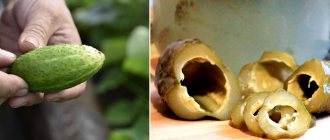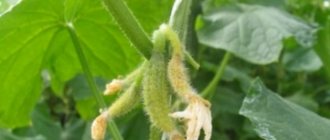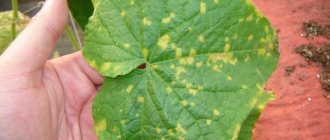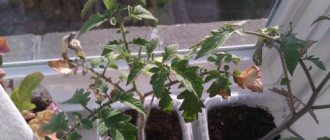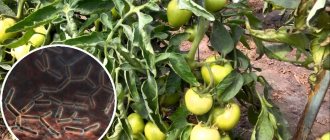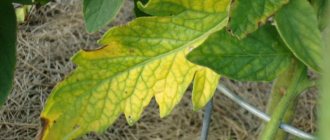Strong, crispy cucumbers, even in regions where the climate is not conducive to high yields, are quite possible. Modern technologies for growing vegetable crops in greenhouses and following the rules of care make it possible to do this without much effort. The seeds are carefully selected, planted correctly, the plants develop well, but the ovaries of the cucumbers turn yellow. This symptom of distress can be caused by a number of reasons.
Insufficient lighting
As you know, cucumbers are quite demanding of light. Therefore, insufficient lighting can lead to the ovaries falling off.
This is especially common in greenhouses and greenhouses, as well as in cloudy weather. To correct the situation, it is recommended:
- It is correct to orient the greenhouse to the cardinal points - in the south of the country in the north-south direction, and in other regions - east-west.
- Even if the area is small, plant no more than 2-3 plants per 1 square meter. Cucumbers grow well and, if planted tightly, will begin to interfere with each other.
- Be sure to pinch the top of the shoots, not allowing them to grow more than 20 cm.
- Promptly remove side shoots in the leaf axils and carry out pinching. Otherwise, the lashes will grow greatly, create unnecessary shadow and take away water and nutrients.
The optimal planting density in a greenhouse is no more than 3 plants per 1 m2
Prevention measures
Growing cucumbers on your own plot is not difficult, despite the demanding nature of the crop. To avoid possible problems, do some preliminary work before planting. First of all, decide on the varieties: which ones are suitable for an open area, and which ones are recommended for greenhouses.
Reference. It is better to plant self-pollinating hybrids in greenhouses, since there are significantly fewer natural pollinators in a closed space than in open ground.
It is important to consider a planting site - with sufficient lighting, well-fertilized soil and without drafts. Ideally, the planting site is changed every year. During periods of abnormal heat, it is advisable to install a canopy over the plants, which will also protect them from heavy rain or hail. In wet weather, drainage grooves will help remove excess moisture.
Water cucumbers only with water at room temperature, and ideally the same as the soil temperature.
Temperature violation
Cucumbers grow well at temperatures from 17 degrees at night and up to 26 during the day. A short cold snap or hot weather will not cause much harm. But if the temperature drops below +13°C or rises above +35°C, this is unacceptable for most varieties.
Therefore, if the region has an unpredictable climate, it is recommended:
- Grow cucumbers in a greenhouse.
- Use film covers at night - the film should lie at a height of 5 cm to create an air “cushion”.
- If necessary, protect the walls with film.
- As a last resort, use heaters. They are not that expensive, but they will help protect plants from unexpected summer frosts.
In hot weather, the greenhouse needs to be ventilated regularly, especially after watering. If the temperature at night does not drop below +15°C, the greenhouse is left open around the clock.
Advice
In case of heat, you need to use white mats or shields. They reflect solar radiation as much as possible, which will prevent yellowing of cucumbers.
Cucumbers are watered at the root, preferably early in the morning, to avoid condensation.
Zelentsy started on a too young plant
The reason for yellowing and drying of the ovary of cucumbers is often the young age of the plants. Such bushes do not yet have time to form a sufficiently strong leaf apparatus that will fully nourish the ovary, so young plants are forced to get rid of it, since they themselves are not yet strong enough.
While the cucumbers are growing and forming, it is necessary to remove all the flowers, since they will not produce full-fledged greens anyway.
Insufficient fertilizing
A deficiency of minerals has a bad effect on the growth of cucumbers and can lead to the ovaries falling off, which will also affect the yield. During the growth period before budding, cucumbers especially need nitrogen, and during flowering and fruit formation - potassium and phosphorus.
Therefore, it is recommended to do this:
- Stop giving manure.
- Prepare a mixture of urea (a tablespoon) and wood ash (3 tablespoons) per 10 liters of water, mix thoroughly and apply as foliar feeding.
- Periodically give complex fertilizers, for example, “Kemira”, “Master”, “Brexil Calcium” and others.
- Twice a season, add wood ash up to 200-300 g per square meter. You can simply scatter it over the soil or pre-infuse it in 10 liters of water.
The bush grows without formation
In a greenhouse, one of the reasons why cucumber ovaries turn yellow is the lack of formation of the bushes. On the ground, this problem manifests itself less, when walking and here, when growing crops vertically, the bushes need to be looked after.
Most varieties and hybrids intended for cultivation in greenhouses intensively increase green mass. This is facilitated by a special microclimate, as well as enhanced nutrition of the plantings. While the bushes are occupied with leaves and shoots, they do not bear fruit. In addition, greens also suffer greatly from shading.
Shaping the plants will help speed up the ripening process. It consists in removing the first ovaries, side shoots and leaves from the cucumber, forming a so-called blind zone at the bottom. Depending on the timing of cultivation and the characteristics of the variety or hybrid, it may vary. On average, from 3 to 8 first nodes are subject to blinding.
Next, the side shoots of the cucumbers are pinched as they grow and old and excess leaves are cut off. The mustache is removed, on which the plant also consumes a lot of nutrition. Follow the recommended schemes:
- for specific conditions (heated or unheated, high and low greenhouses);
- growing time (early spring, spring-summer, autumn-winter);
- type of cucumbers (bee-pollinated, parthenocarpic);
- growing location (open or closed ground).
When using molding, the fruits receive enough nutrients and light and do not turn yellow.
Irrigation violations
Cucumbers love water, but it should be given in moderation. Interestingly, both excessive and insufficient watering leads to yellowing and falling off of the ovaries. Therefore, experienced summer residents recommend:
- Always allow water to settle before watering.
- In hot weather, give water in the early morning, and in cool weather - in the afternoon.
- During the formation of ovaries, stop giving water for 5-7 days. The soil will dry out during this time. This will cause more female flowers to form.
- Also, to stimulate the formation of ovaries, you need to follow the watering norm - 3 liters per square meter once a week. If the weather is too hot, give the same volume 2 times a week.
Important!
During flowering and fruiting, watering is increased to 10 liters per square meter, and water is given 2-3 times a week.
What to do to save the harvest
Before taking measures to save the crop, it is necessary to find out the true reason for the wilting of cucumbers. Experienced gardeners advise applying fertilizer first to prevent nutritional deficiencies. Use complex formulations “Diammofoska”, “Ammofoska”, “Potassium sulfate” and others.
Folk remedies are no less effective: 1 tbsp. l. urea, 3 tbsp. l. Dilute wood ash in a bucket of water. Spray the cucumbers with the solution after sunset so as not to cause burns on the foliage.
To save the harvest, ensure complete pollination of flowers. When grown in greenhouses, this is done manually - pollen is transferred with a soft brush from male to female specimens. In open ground, you need to attract bees by leaving containers of sweet water with sugar or honey on the site. You can also plant fennel, basil, chamomile, and calendula nearby.
Reference. If there are too many shoots on the bushes, they will have to be removed. All lower shoots are removed up to the fifth leaf. The vines that are actively stretching upward should be pinched, and the plant will then produce many side shoots with female flowers.
An obligatory stage of reanimation work is pest control. Cucumbers are treated against insects with the following compounds:
- infusion of onion peel;
- solution of ammonia (3 tablespoons diluted in a bucket of water);
- a solution of baking soda and laundry soap (1 tablespoon per 1 liter of water);
- chemicals - “Commander”, “Aktara”, “Alatar” - are used exclusively before fruiting.
Biological preparations “Fitoverm”, “Kleschevit”, “Biotlin” are considered less dangerous and harmful.
Bacteriosis and gray rot of cucumbers
Gardeners often protect cucumbers from fungal diseases, and this is correct, since there really are a lot of them. But sometimes a crop can suffer from bacteriosis, which is also called angular spotting. Various factors can provoke the development of infection:
- temperature changes;
- depleted soil;
- excessive watering;
- violation of crop rotation;
- insufficient ventilation of the greenhouse.
It is impossible to completely exclude the development of bacteriosis, but it is quite possible to play it safe. The main measures are:
- Treat cucumber plantings during the growth period with Bordeaux mixture at a concentration of 1% or with the preparation "HOM" (concentration 0.4%).
- If signs of bacteriosis appear (angular spots of yellow or light brown color, holes in the foliage), treat with preparations, for example, Trichoderma Veride, Gamair or Climate.
- If the root collar is affected by necrosis, treat with Fitolavin (0.2% solution).
Cucumber leaves affected by bacteriosis
Another common infection in greenhouses is gray rot. This is a fungal disease that flares up in cool weather and quickly affects the ovaries. The carriers are pollinating insects, which spread fungal spores during flowering. To stop the mass death of ovaries, stop watering for a short time and ensure the greenhouse is ventilated.
Dying of ovaries due to the spread of gray mold
Causes of yellowing and wilting of the ovary in a greenhouse
If the ovaries on your greenhouse cucumbers have turned yellow, withered, or even fallen off, this may indicate the following:
- Formation of too many ovaries.
- Incorrect water treatment schedule.
- Lack of certain nutritional components - macro- and microelements.
- Violation of crop rotation rules.
- Poor or unsuitable soil for cucumbers.
- Thickened planting.
- Sudden temperature changes.
- Prolonged cloudy cold weather.
- Lack of light.
- Damage by diseases and pests.
- Not pollination of varietal plants.
- Cross-pollination of hybrids/varieties.
- Incorrect harvesting.
It is important to correctly understand the cause in order to stop and eliminate the loss of ovaries.
yellowing of cucumber leaves in a greenhouse
Pollination problems
Some varieties require pollination, but are grown in a greenhouse or greenhouse, which prevents normal access by bees. Moreover, even if you open the doors, there will still be few pollinators in hot weather.
Therefore you need to act like this:
- Use self-pollinating varieties - then this problem is solved 100%.
- Attract bees by spraying cucumbers with a solution of honey - a teaspoon per glass of water.
- Pollination is carried out manually using a brush - pollen is taken from the stamens and applied to the stigmas of female flowers.
As you can see, there are quite a few reasons why the ovaries fall off and cucumbers turn yellow. They can be associated with both weather factors and improper care. At the same time, it is quite possible to influence most of them - it is necessary to ensure normal watering, regularly apply fertilizing, ventilate the greenhouse, and, if necessary, artificially pollinate the flowers.
Useful tips from experienced farmers
Experienced summer residents advise protecting the crop from possible temperature changes at night. The bushes are covered with agrofibre or film.
The root system of the plant grows 40 cm deep into the soil, so watering must be sufficient to allow moisture to penetrate to this depth. Otherwise, the roots will be drawn to the soil surface and are more likely to be damaged by the scorching sun or night cold.
One of the secrets of experienced farmers is the special preparation of seeds. Experts recommend pre-hardening and warming the seed for better germination. Treatment with potassium permanganate will increase resistance to diseases.
Weak root system
With a weak root system, the plant cannot fully provide itself with nutrition and moisture. In this regard, normal ovaries also cannot form, or they immediately begin to turn yellow.
Solution to the problem:
- Handle cucumber seedlings carefully, without damaging their roots when picking or transplanting.
- Observe the timing of sowing seeds for seedlings in order to plant the plants in open ground or a greenhouse at the right time. And thus, the root system will be quite strong and developed.
Why do pepper seedlings' leaves turn yellow?
How can you help a pepper if its leaves suddenly begin to turn yellow? For what reason does this happen?
Causes
Yellowing of the lower cotyledon leaves is not critical, but it is worth paying attention to. If all the leaves turn yellow, this is already an alarming signal.
Thus, the pepper communicates that he is very uncomfortable. There may be several reasons:
- excessive or insufficient watering
- watering with cold or hard water
- lack of nutrients
- low temperature content
- diseases
Treatment
If the yellowing is not large-scale and clearly destructive, then the matter is most likely due to non-compliance with the growing conditions
You need to pay attention to watering. The soil should not be constantly wet, this promotes rotting of the root system, but also the earth ball should not dry out completely
Balance is needed. Some articles strongly recommend “abundant, abundant watering,” but we want to argue that everything should be in moderation!
Just when watering, the earth ball should be well and completely moistened. It should be just damp, not soaking wet. And re-watering should be done only when the top layer of soil dries out.
Check that when watering, water does not flow down the walls and further into the pan, and at the same time the earthen ball itself remains almost dry. This happens when the soil is not loose enough, it is compressed and forms gaps between the walls of the container and the earthen lump. If this happens, loosen the soil around the edges.
The soil must be loose and breathable. If the soil is very clumpy, it is heavy and dense, then the moisture will certainly stagnate and cause rotting of the roots and, as a result, poor nutrition of the plant and its yellowing from a lack of necessary substances.
It is this bright yellow color of the leaves that signals that the conditions listed above have been violated.
If you planted the seeds in clean peat or coconut substrate, or maybe not in very high-quality, poor soil, then the seedlings no longer have enough nutrition. This is especially noticeable in greatly grown seedlings, which suddenly begin to slowly turn yellow leaves.
Also, due to a lack of iron and magnesium, chlorosis of the leaves occurs, while the leaf blade turns yellow and the veins stand out clearly.
The seedlings need to be fed, not only with nitrogen fertilizer, but with a complex set containing not only nitrogen, but also potassium, phosphorus, iron and other necessary elements, without which the sprouts also starve. Use Gumat + 7 or Zdraven turbo for seedlings.
Fertilizing with these preparations can be done not only by the root, but also by spraying. It is produced with a nutrient working solution on the undersides of the leaves.
It is important that the water is not cold!
Also, to avoid yellowing, pay attention to the temperature of the seedlings; it should be at least 22-24 degrees. Avoid drafts and cold air currents when ventilating
Yellowing also occurs due to some diseases, such as mosaic, phytoplasmosis (stolbear), black leg, more about them below.
Poor quality seeds
If you choose low-quality cucumber seeds for sowing in open ground (or a greenhouse), or for seedlings, you may encounter this unpleasant problem. What does low-quality seeds mean? This refers to seeds that the summer resident collected independently from his plants. After all, the seeds could have been obtained as a result of cross-pollination with hybrids, which means that they could grow into plants with unpredictable properties. In addition, young seeds (at the age of 1, 2 years) can be considered low-quality.
Solution to the problem:
- Buy cucumber seeds from reliable producers who have a good reputation and produce quality products.
- Choose more mature seeds for sowing, the ideal age is 3-4 years (at least 2).
- If you still want to sow young seeds, it is recommended to artificially age them (i.e., heat them) before planting. To do this, you need to keep them at a temperature of 25-28 degrees Celsius for 1.5-2 months.
High yield of hybrids
It would seem that this is a big plus. But, unfortunately, this characteristic can also play a negative role in plant development. Since almost every axil produces an ovary, or even several, the plants do not have enough nutrients. Then the excess cucumber ovaries fall off. In order not to create excessive stress for the cucumbers, remove the ovaries yourself - before the flowers appear. However, if you see that a small number of ovaries are turning yellow, you can not interfere with the process, this means that the plant itself takes care of the optimal number of fruits and discards the excess.
Features of the variety
Some varieties of bunched super-yielding cucumbers are characterized by the death of part of the ovaries. The bush cannot nourish all future fruits, so up to a quarter of all cucumber ovaries turn yellow and dry out naturally.
It is worth looking for other reasons if the death of future fruits is abundant and is observed in all greenhouse plantings. And to help the bush, already at the flowering stage you need to manually remove some of the flowers.
The cucumbers may appear too early. The young plant is not yet able to provide them with adequate nutrition. Later, with proper care, the greens will develop normally as soon as the fruiting period arrives.

